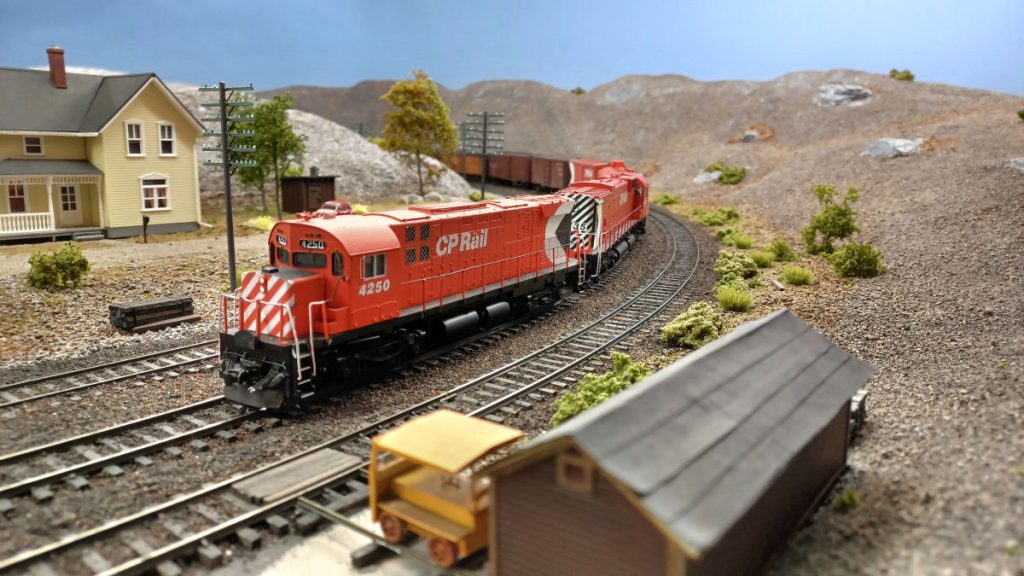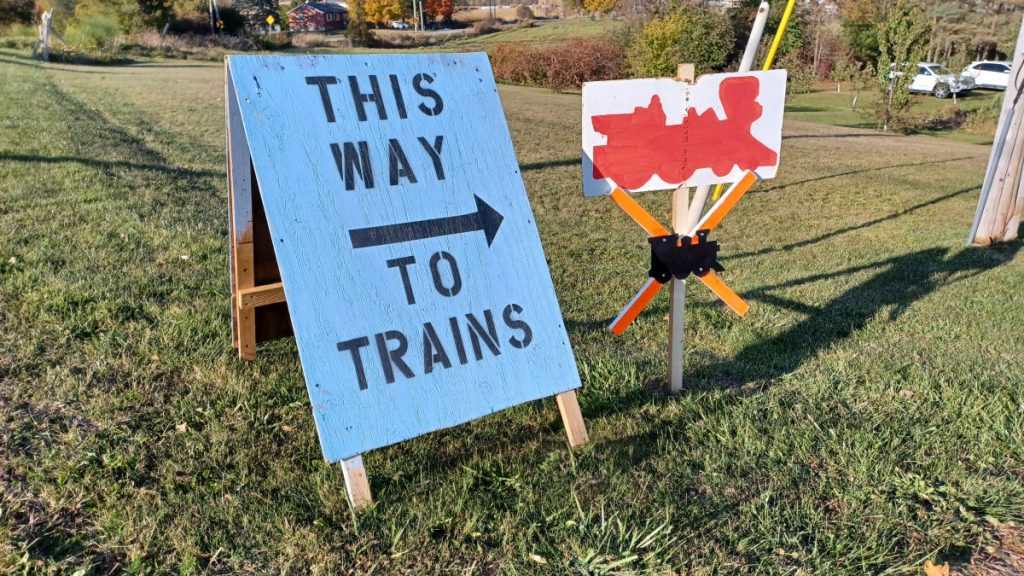TRAIN SIGNALS
17. The headlight must be displayed to the front of every train by day and by night. It must be extinguished when a train turns out to meet another and has stopped clear of the main track, or is standing to meet trains at the end of two or more tracks, or at junctions with switches properly lined for the approaching train. It should be left extinguished until the rear of the expected train has passed.
17A. On engines so equipped, the headlight will be dimmed:
- When standing on yard tracks
- When standing on the main track at meeting points after the switch has been lined for the siding
- Approaching stations where trains are receiving or discharging passengers
- Approaching stations where train orders or clearances are to be picked up
- Approaching meeting and passing points, junctions, end of two or more tracks where trains or engines are clear, to assist in train identification by train and engine crews
- On two or more tracks when approaching trains and when trains are approaching in the opposite direction
Except that the full power of the headlight must used approaching all public crossings at grade and until such crossings are reached regardless of their location.
17B. Engine used in road service which are regularly required to run backward for any portion of the trip, except to pick up a detached portion of a train or in making terminal movements, shall have a headlight on the rear.
Under under conditions requiring an engine to run backward at night, a white light must be displayed on the leading end.
17C. Should the headlight fail while the train is en route at night, repairs must be made as quickly as possible. If repairs cannot be made, such lights as are available will be displayed and train may then proceed to the first point where repairs can be made, passing over all public crossings at grade not specially protected by watchman, gates or automatic crossing signal with care and at a speed not exceeding twenty miles per hour.
Train dispatcher must be advised from first open train order office when a train is running with defective headlight, and he will, when possible, notify other trains concerned.
17D. On engines so equipped, oscillating white headlight must be displayed to the front by day and by night. It must be extinguished when the headlight is dimmed or extinguished.
Oscillating white headlight should be used in a stationary position as a subsitute headlight in case of failure of the headlight.
17E. Yard engines will display a headlight to the front and rear by night.
Under conditions not requiring display of markers, other engines without cars will display a white light to the front and rear by night.
Note: headlight on end coupled to cars may be extinguished subject to requirements of last paragraph of Rule 17A.
19. MARKERS – the following signals will be displayed to the rear of every train to indicate the rear of the train.
- By day – markers not lighted.
- By Night:On single track and when running with the current of traffic on two tracks, markers lighted displaying red to the rear.On two tracks, when standing or running against current of traffic, markers lighted displaying red to the rear on the outside, and green to the rear on the inside.
On more than two tracks, when running with the current of traffic, or when standing or running against the current of traffic, markers lighted displaying red to the rear unless otherwise directed by special instructions.
When a train is clear of the main track to be passed by another train, lighted markers will display green to the rear.
When the rear of a train is equipped with built-in markers, they must be lighted by day and by night.
When a train is equipped to display a single flashing type marker it will be unlighted by day; by night it will display flashing red to the rear, except when clear of the main track to be passed by another train it will display flashing green to the rear.
EXCEPTION: The requirement that markers display green to the rear when clear of main track does not apply in CTC.
19A. A train not equipped to display markers as prescribed by Rule 19 will display a red flag by day and a red light by night to indicate the rear. The red light will be replaced by a white light when the train is clear of main track.
EXCEPTION: The red light will not be replaced by a white light in CTC.
20. All sections except the last will display two green flags and two green lights by day and by night in the places provided for that purpose on the leading end of the engine.
21. Extra trains will display two white flags and two white lights in the places provided for that purpose on the leading end of the engine, except that white flags and white lights need not by displayed in CTC.
22. When two or more engines are coupled, for all or part of a subdivision, each engine shall display signals as prescribed by Rules 20 and 21.
23. One marker, flag or light display where in Rule 19, 20 and 21 two are required will indicate the same as two; but the proper display of all train signals is required.
24. When two or more engines are coupled the leading engine shall sound the signals as prescribed by Rule 14.
26. A blue signal displayed at one or both ends of an engine, car or train, indicates that workmen are under or about it; when thus protected it must not be coupled to or moved. Each class of workmen will display the blue signals and the same workmen are alone authorized to remove them. Other equipment must not be placed on the same track so as to intercept the view of the blue signals without first notifying the workmen.
When emergency repair work is to be done under or about engines or cars in a train and a blue signal is not available, the engine crew must be notified and protection given to those engaged in making the repairs.
27. A signal imperfectly displayed, or the absence of a signal at a place where one is usually shown must be regarded as the most restrictive indication that can be given by that signal, except that when the day indication is unmistakable it will govern. Such conditions must be reported to the proper officer.
Employees using a switch where the switch light is imperfectly displayed or absent must, if practicable, correct or replace the light.
28. A combined green flag and white flag or combined or flashing green and white light will be used to stop a train at the flag stations indicated on the schedule or in special instructions.
29. When a signal(except a fixed signal) is given to stop a train it must, unless otherwise provided, by acknowledged as prescribed by Rule 14 (g), (h), or (n).
30. The engine bell must be rung when an engine is about to move; while moving about stations; while passing a train standing on adjacent track; and 1/4 of a mile from every public crossing at grade (except within the limits of such towns and cities as may be prescribed in special instructions) until the crossing is occupied by engine or cars.
32. The unnecessary use of the whistle or the bell is prohibited. They will be used only as prescribed by rule or law, or to prevent accident.
33. Watchmen stationed at public crossings at grade must use stop signals when necessary to stop trains or engines. They will use prescribed signals to stop highway traffic.
34. Crews on engines and snow plow foremen must know the indication of fixed signals (including switches where practicable) and members of train crews must know the indication of train order signals affecting their train before passing them. All members of engine and train crews must, when practicable, communicate to each other by its name the indication of each signal affecting the movement of their train or engine.
35. In emergency cases when track is suddenly found defective or is obstructed any employee must, by the use of flags, lights, torpedoes, fusees or other signals make every possible effor to stop trains in both directions.


